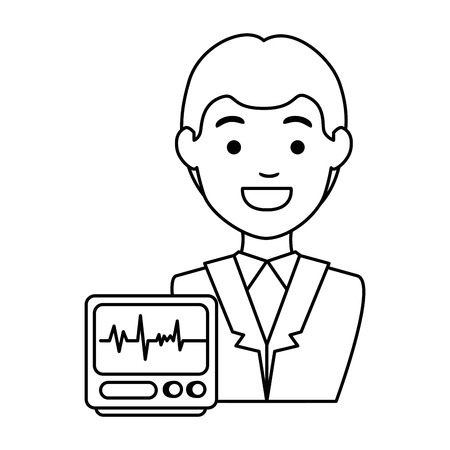Introduction to Health Insurance in the U.S.
Health insurance is a big part of life in the United States. Most people rely on it to help cover the cost of medical care, from routine doctor visits to unexpected emergencies. Unlike some other countries where healthcare is government-funded, in America, health insurance often comes through your employer or you buy it yourself. There are many different plans and options, which can make things confusing, especially if youre new to the system or just starting a new job.
Understanding how health insurance works—and knowing what key terms mean—can help you avoid surprises when you get a medical bill. It also helps you make smart choices about which plan is best for you and your family. Here’s a quick overview of why these terms matter:
| Term | What It Means | Why It Matters |
|---|---|---|
| Deductible | The amount you pay out-of-pocket before insurance starts paying | Affects how much you spend up front for care |
| Copay | A fixed fee for specific services (like $30 for a doctor visit) | Helps you budget for regular healthcare expenses |
| Coinsurance | Your share of costs after the deductible (often shown as a percentage, like 20%) | Determines your ongoing costs after hitting your deductible |
| Out-of-Pocket Maximum | The most you have to pay in a year before insurance covers everything else | Protects you from very high medical bills in case of serious illness or injury |
When you understand these basic terms, it’s easier to read plan details, compare options, and figure out what youll really pay when you need care. This knowledge puts you in control and helps you make choices that fit your health needs and your budget.
2. What is a Deductible?
When you’re learning about health insurance in the United States, one of the most important terms to understand is “deductible.” Let’s break down what a deductible is, how it impacts your healthcare costs, and some helpful tips for managing these expenses throughout the year.
Explanation of Deductibles
A deductible is the amount of money you have to pay out-of-pocket for covered healthcare services before your health insurance plan starts to pay. For example, if your annual deductible is $1,500, you’ll need to spend that amount on eligible medical bills before your insurance begins sharing the costs.
How Deductibles Affect Your Healthcare Costs
Your deductible plays a big role in determining how much you pay when you need medical care. Until you meet your deductible, you are responsible for paying the full cost of many services. After you reach your deductible, your insurance usually covers a larger share of the costs—often through copays or coinsurance.
Example Table: How Deductibles Work
| Yearly Deductible | Your Spending Before Deductible Met | Your Spending After Deductible Met |
|---|---|---|
| $1,500 | You pay 100% of costs for most services until you spend $1,500 | Insurance pays most costs; you pay only copays or coinsurance |
Tips for Budgeting for Your Deductible
- Know Your Plan: Check your plan details to see exactly what your deductible is and which services count toward it.
- Track Your Spending: Most insurance companies provide online tools or apps so you can see how much you’ve paid toward your deductible during the year.
- Plan Ahead: If you know you’ll have planned procedures or regular medications, try to budget for those expenses early in the year.
- Use HSAs or FSAs: Health Savings Accounts (HSA) and Flexible Spending Accounts (FSA) let you set aside pre-tax money to help cover deductible costs.
Understanding how deductibles work can help you avoid surprises and make smarter choices when using your health insurance throughout the year.

3. Understanding Copays and Coinsurance
What Are Copays?
A copay, or copayment, is a fixed amount you pay for a covered healthcare service at the time you receive care. For example, you might pay $25 every time you visit your primary care doctor, no matter what the total cost of the visit is. The rest of the bill is usually paid by your insurance company.
What Is Coinsurance?
Coinsurance is a percentage of the cost of a covered healthcare service that you pay after youve met your deductible. Instead of paying a flat fee, you pay a portion of the total bill. For instance, if your coinsurance is 20%, and the allowed amount for an office visit is $100, you would pay $20, and your insurance pays the remaining $80.
Key Differences Between Copays and Coinsurance
| Feature | Copay | Coinsurance |
|---|---|---|
| How Its Charged | Flat dollar amount ($) | Percentage (%) of total cost |
| When You Pay | Usually at the time of service | After meeting your deductible |
| Example Amount | $20 for a doctor visit | 20% of the bill for hospital stay |
| Predictability | Easier to predict costs | Cost varies with the price of services |
Real-World Examples
- Copay Example: You go to an urgent care clinic for a sore throat. Your plan has a $40 copay for urgent care visits. You pay $40 when you check in, and thats it—your insurance covers the rest.
- Coinsurance Example: You have surgery after meeting your deductible. The hospital charges $5,000 and your coinsurance rate is 20%. You pay $1,000 (20% of $5,000), while your insurance covers the other $4,000.
- Mixed Example: Sometimes you may have both: a copay for seeing a specialist ($50) and coinsurance (30%) for any procedures done during that visit after your deductible is met.
When Will You Encounter Each?
You’ll typically encounter copays with routine doctor visits or prescription medications—these are common set fees listed on your insurance card. Coinsurance usually comes into play with bigger expenses like hospital stays, surgeries, or advanced imaging (like MRIs), especially after you’ve paid enough to meet your plan’s deductible.
4. Out-of-Pocket Maximum: Your Safety Net
When you have health insurance in the United States, one of the most important terms to understand is the out-of-pocket maximum. This is your financial safety net when it comes to medical costs. Let’s break down what it means, how it works, and why it matters for your budget.
What Is an Out-of-Pocket Maximum?
The out-of-pocket maximum is the most you will pay during a plan year for covered healthcare services. After you reach this limit, your health insurance pays 100% of the allowed amount for covered services. It includes everything you spend on deductibles, copays, and coinsurance, but does not include your monthly premium or costs for services your plan doesn’t cover.
How Does It Protect You?
Medical bills can add up quickly if you have an accident, illness, or need expensive treatments. The out-of-pocket maximum puts a cap on how much you have to pay from your own pocket within a year. Once you hit this limit, you won’t have to worry about additional costs for covered care—the insurance company picks up the rest.
What Counts Toward the Out-of-Pocket Maximum?
| Included | Not Included |
|---|---|
| Deductibles | Monthly premiums |
| Copays | Out-of-network charges (if not covered) |
| Coinsurance | Services not covered by your plan |
| Payments for covered in-network care |
What Happens After You Reach This Limit?
After you’ve paid enough in deductibles, copays, and coinsurance to reach your out-of-pocket maximum, your health insurance covers all additional costs for covered in-network care for the rest of the plan year. This means no more surprise bills for things like doctor visits, surgeries, or prescription drugs that are part of your plan.
Why Should You Know Your Out-of-Pocket Maximum?
Your out-of-pocket maximum helps you understand the most you could spend in a worst-case scenario. If you’re comparing health plans or planning for medical expenses, knowing this number can help you budget and avoid unexpected financial stress if something serious happens.
5. Other Key Health Insurance Terms to Know
Besides deductibles, copays, coinsurance, and out-of-pocket maximums, there are other important health insurance terms you’ll see when using your plan in the United States. Understanding these can help you make better decisions about your healthcare and avoid surprises. Here’s a breakdown of some common terms:
Premium
Your premium is the amount you pay each month for your health insurance plan. Think of it like a membership fee—you pay this even if you don’t use any medical services.
Provider Network
A provider network is a group of doctors, hospitals, pharmacies, and other healthcare providers that have agreed to work with your insurance company. Using “in-network” providers usually means lower costs for you, while going “out-of-network” often means higher costs or no coverage at all.
In-Network vs. Out-of-Network Example
| In-Network | Out-of-Network | |
|---|---|---|
| Doctor Visit | $30 copay | $100 (or not covered) |
| Lab Test | $15 copay | $75 (or not covered) |
Preauthorization (Prior Authorization)
Preauthorization, sometimes called prior authorization, means you need approval from your insurance company before getting certain medical services, procedures, or medications. If you skip this step, your insurance may refuse to pay for the service.
Formulary
A formulary is a list of prescription drugs that your insurance plan covers. Medications on this list are usually available at a lower cost to you. If a drug isn’t on the formulary, it might be more expensive or not covered at all.
Tiers in a Formulary Example
| Tier | Description | Your Cost |
|---|---|---|
| Tier 1 | Generic drugs | Lowest copay |
| Tier 2 | Preferred brand-name drugs | Moderate copay |
| Tier 3 | Non-preferred drugs | Higher copay or coinsurance |
| Specialty Tier | Certain high-cost drugs | Highest cost share |
Tips for Navigating Your Plan
- Always check if your doctor or hospital is in-network before making an appointment.
- If your doctor prescribes medication, ask if it’s covered by your plan’s formulary.
- If your treatment needs preauthorization, start the process early to avoid delays.
- Keep track of your premiums and other costs so you know what to expect each month.
- If you’re unsure about what’s covered or how much something will cost, call your insurance company’s customer service for help.
This knowledge can help you get the most out of your health insurance and avoid unexpected bills.


